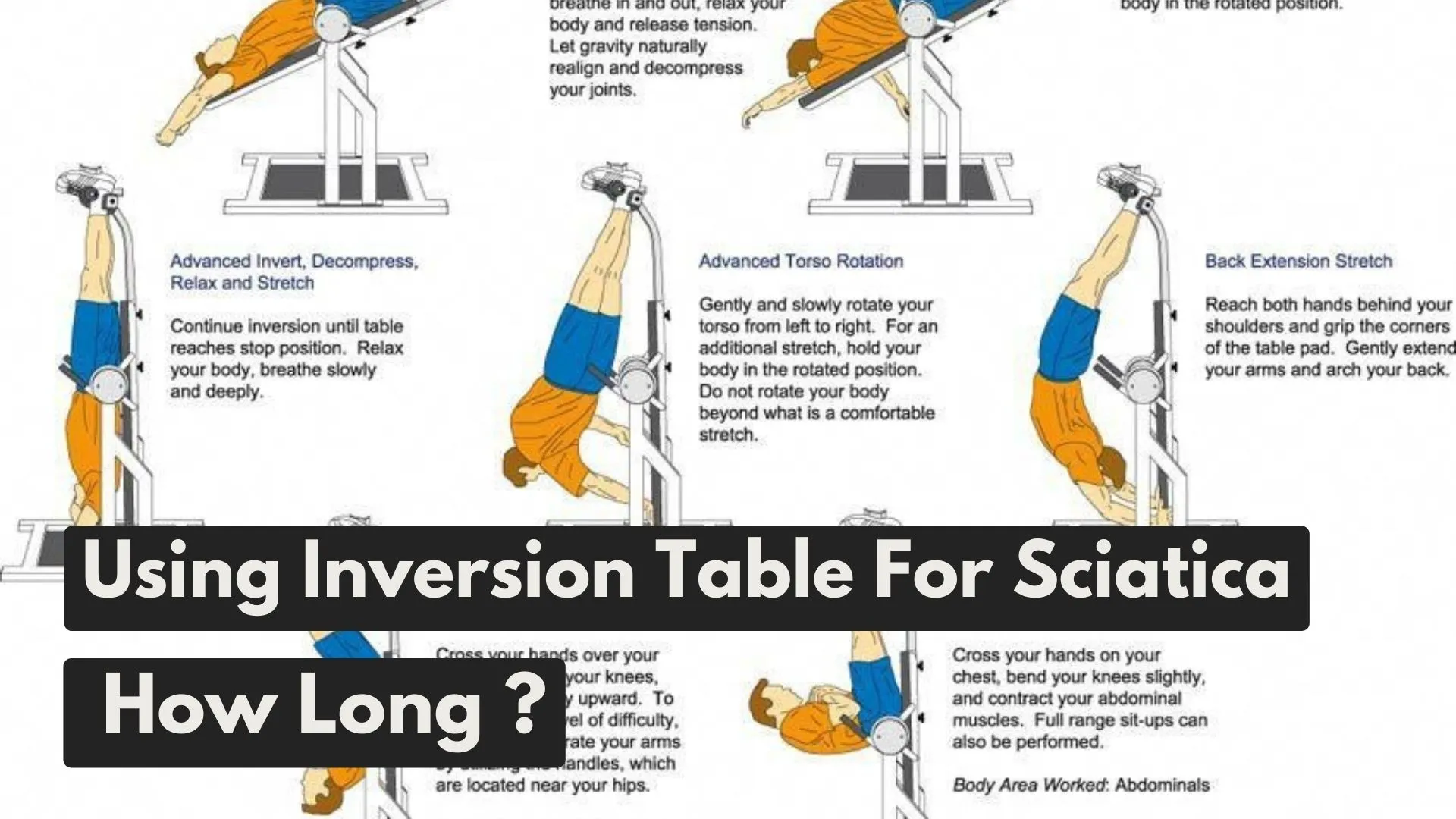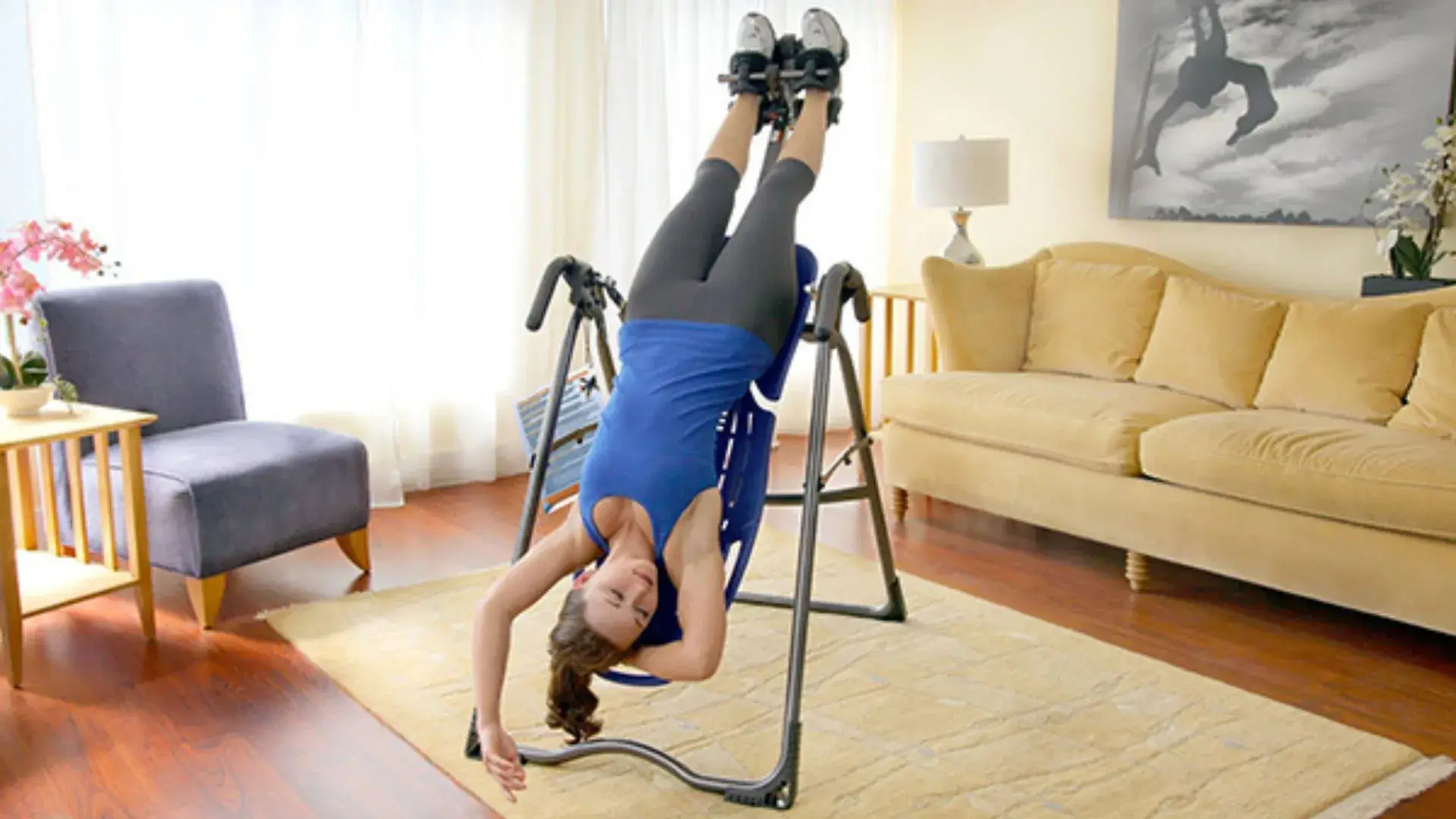Typically, beginners may start with short sessions of 1 to 2 minutes, gradually increasing up to 5 to 10 minutes per session over time.
Inversion therapy at home helps in fixing body posture and there must not be a doubt about it.
Inversion tables are also getting popular to treat Sciatica. And this is an effective treatment though, some studies claim not to be true, but some prove inversion therapy is effective in treating Sciatica.
In this article, I have covered everything you need to know related to “How Long Should I Use An Inversion Table For Sciatica“. Apart from this, I’ve also covered some additional information that I believe you should know if you are going to use an inversion table to treat Sciatica.
Below you can use the table of contents and navigate around those topics of your interest.
What is Sciatica ?
Sciatica refers to pain that travels along the path of the sciatic nerve. The sciatic nerve originates in the lower spine, passes through the buttock, down the back and side of the leg, and extends into the foot and toes.
When to Seek Medical Attention:
✅ Mild sciatica often resolves on its own over time.
✅ Consult your primary care professional if self-care measures don’t ease symptoms.
✅ Seek immediate medical attention for sudden numbness or muscle weakness in a leg, pain after a violent injury, or trouble controlling bowels or bladder.
Inversion Therapy Effectiveness In Treating Sciatica

The effectiveness of inversion therapy for treating sciatica remains a debated topic, with research showing mixed results.
Some studies suggest that inversion therapy, when combined with other treatments like physical therapy, may be effective in managing sciatica pain and potentially reduce the need for surgery.
The theory behind its benefit is that inversion decompresses the spine, potentially relieving pressure on the sciatic nerve which is often irritated or compressed in sciatica cases.
Anecdotal evidence suggests that some individuals experience short-term pain relief from using inversion tables.
Limitations and Concerns
Multiple studies haven’t shown a statistically significant difference in pain reduction between inversion therapy and placebo groups, calling its efficacy into question.
The long-term benefits of inversion therapy for sciatica remain uncertain.
Safety concerns exist, as inversion therapy can increase blood pressure and may not be suitable for individuals with certain health conditions like heart disease, high blood pressure, or glaucoma.
Overall:
While some individuals might find temporary relief from inversion therapy for sciatica, evidence for its overall effectiveness is inconclusive.
👉🏼 Inversion Therapy At Home Guide
How Long Should I Use An Inversion Table For Sciatica ?

Factors Influencing Duration of Use
The ideal duration for using an inversion table for sciatica relief can vary depending on several factors, including:
☑️ The severity of Symptoms
The severity of your sciatic pain can influence How long should you use an Inversion Table for Sciatica.
Those with mild to moderate symptoms may find relief with shorter sessions, while individuals with more severe pain may benefit from longer sessions.
☑️ Tolerance to Inversion
Your tolerance to being inverted also plays a role. Some people may feel uncomfortable or dizzy when first using an inversion table, requiring shorter initial sessions until they acclimate to the sensation.
☑️ Fitness Level and Flexibility
Your overall fitness level and flexibility can impact how long you can comfortably use an inversion table. Beginners may need to start with shorter sessions and gradually increase the duration as they build strength and flexibility.
☑️ Suggestions from Healthcare Providers
It’s essential to consult with your healthcare provider before starting any new treatment, including inversion therapy. They can offer personalized recommendations based on your specific condition and medical history.
General Guidelines for Duration
While individual needs may vary, here are some general guidelines to consider when using an inversion table for sciatica relief:
☑️ Start Slow
If you’re new to inversion therapy, start with short sessions of 1-2 minutes to gauge your tolerance and comfort level. Gradually increase the duration as you become more accustomed to the sensation.
☑️ Listen to Your Body
Pay attention to how your body responds during and after each inversion session. If you experience any discomfort or adverse effects, stop immediately and consult with your healthcare provider.
☑️ Aim for Consistency
Consistency is key when using an inversion table for sciatica relief. Rather than prolonged sessions infrequently, aim for shorter, more frequent sessions throughout the week to maximize the benefits.
☑️ Gradually Increase Duration
As your comfort level and tolerance to inversion improve, gradually increase the duration of your sessions. Aim for a target range of 5-15 minutes per session, depending on your individual needs and preferences.
☑️ Take Breaks as Needed
If you experience any discomfort or fatigue during a session, don’t hesitate to take breaks or return to an upright position. It’s essential to listen to your body and prioritize safety during inversion therapy.
FAQs Related To “How Long Should I Use An Inversion Table For Sciatica”
How long should I use an inversion table for sciatica relief?
The duration of use for an inversion table varies depending on individual tolerance and response. Typically, beginners may start with short sessions of 1 to 2 minutes, gradually increasing up to 5 to 10 minutes per session over time. However, it’s crucial to listen to your body and consult with a healthcare professional for personalized guidance.
Can using an inversion table for too long worsen sciatica symptoms?
Prolonged or excessive use of an inversion table can potentially worsen sciatica symptoms or cause discomfort, especially if done incorrectly or for extended periods beyond one’s tolerance level. It’s important to follow usage guidelines, start with short sessions, and consult with a healthcare provider if experiencing increased pain or discomfort.
How frequently should I use an inversion table for sciatica relief?
The frequency of inversion table use for sciatica relief can vary based on individual needs and preferences. Some may benefit from daily sessions, while others may find relief with less frequent use, such as every other day or a few times a week. Experiment with different schedules and listen to your body’s response to determine the optimal frequency for your condition.
Are there any risks associated with using an inversion table for sciatica?
While inversion tables can offer relief for some individuals with sciatica, there are potential risks associated with use, including increased pressure on certain areas of the body, temporary changes in blood pressure, and potential aggravation of certain medical conditions. It’s essential to use the inversion table properly, start with short sessions, and consult with a healthcare professional before beginning any new treatment regimen.
Can inversion therapy alone effectively treat sciatica?
Inversion therapy, including the use of inversion tables, may provide temporary relief for some individuals with sciatica by decompressing the spine and reducing pressure on the affected nerves. However, it’s often recommended as part of a comprehensive treatment plan that may include other therapies such as stretching, exercise, medication, and physical therapy for long-term management of sciatica symptoms. Consultation with a healthcare provider is essential to determine the most appropriate treatment approach for your specific condition.
Conclusion On “How Long Should I Use An Inversion Table For Sciatica”
Using an inversion table can be valuable exercise equipment in managing sciatic pain and promoting spinal health.
However, the optimal duration for inversion table use varies depending on individual factors such as symptom severity, tolerance to inversion, and fitness level.
At this step, I would like to advise you to read my article “Who Should Not Use An Inversion Table“. Go through this guide once, and if you fall under any circumstance then consider using an inversion table or consider a consultant doctor before using an inversion table therapy.
By starting slow, listening to your body, and gradually increasing duration, you can find the right balance to effectively relieve sciatica and improve your overall well-being.
As always, consult with your healthcare provider before beginning any new treatment regimen to ensure it’s safe and appropriate for your specific condition.
With patience and consistency, inversion therapy can be a game-changer in your journey toward sciatica relief.














![Inversion Table Exercise & Workout Therapy Instruction [ Must-Read Guide ] inversiontablehub.com](https://inversiontablehub.com/wp-content/uploads/2023/02/Red-and-Black-Dark-Gamer-Sports-YouTube-Outro-18.webp)

Leave a Reply